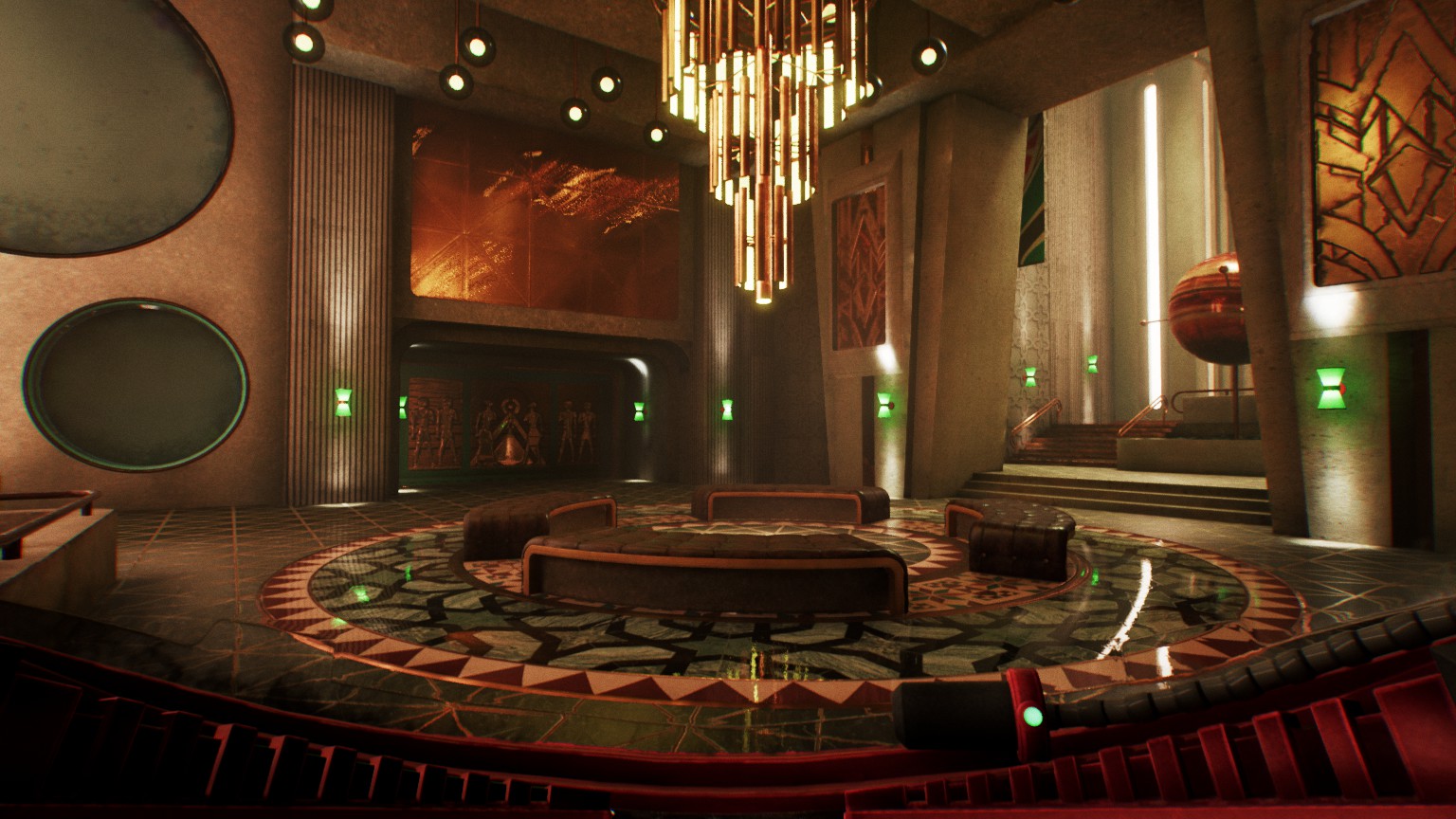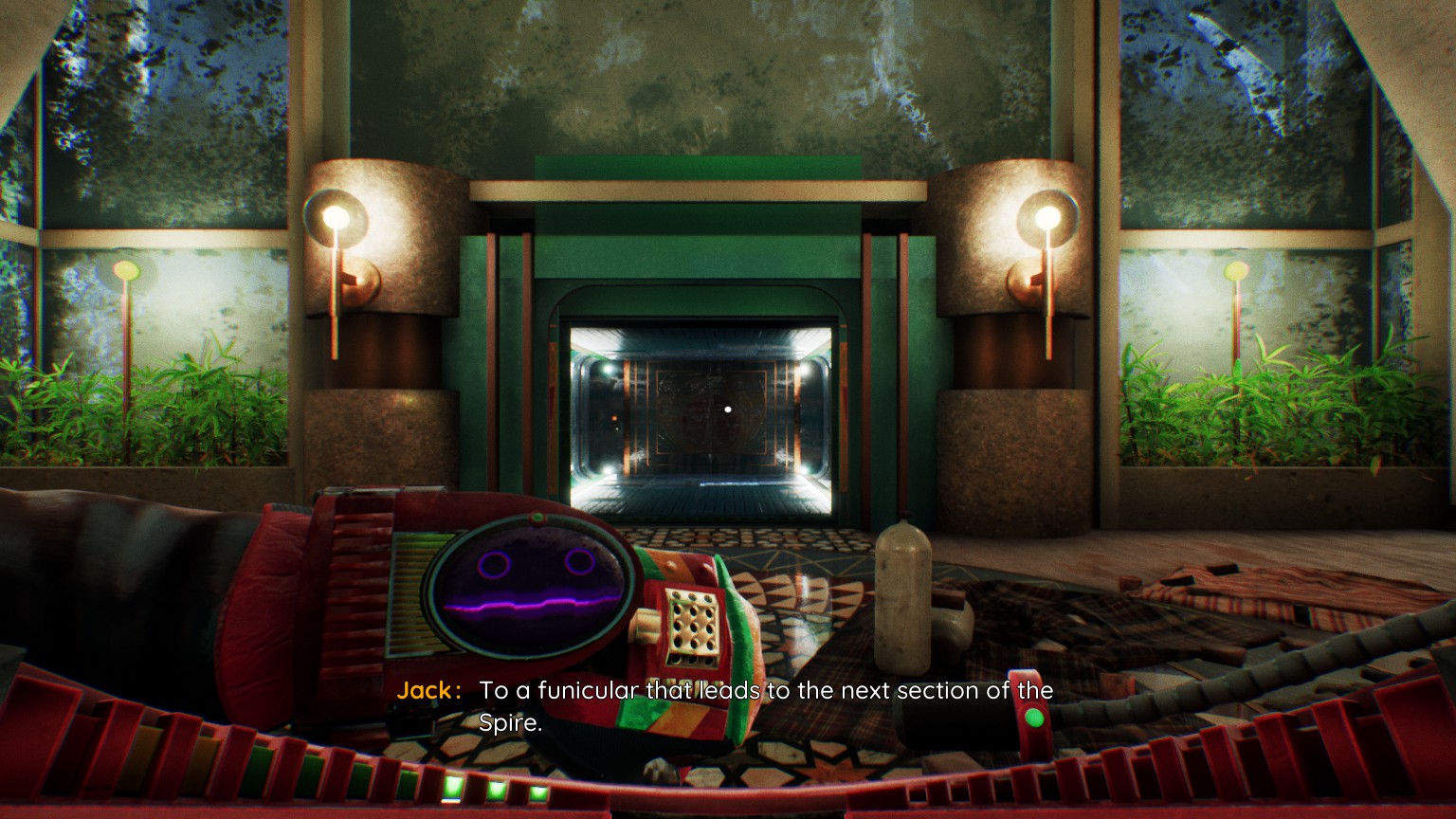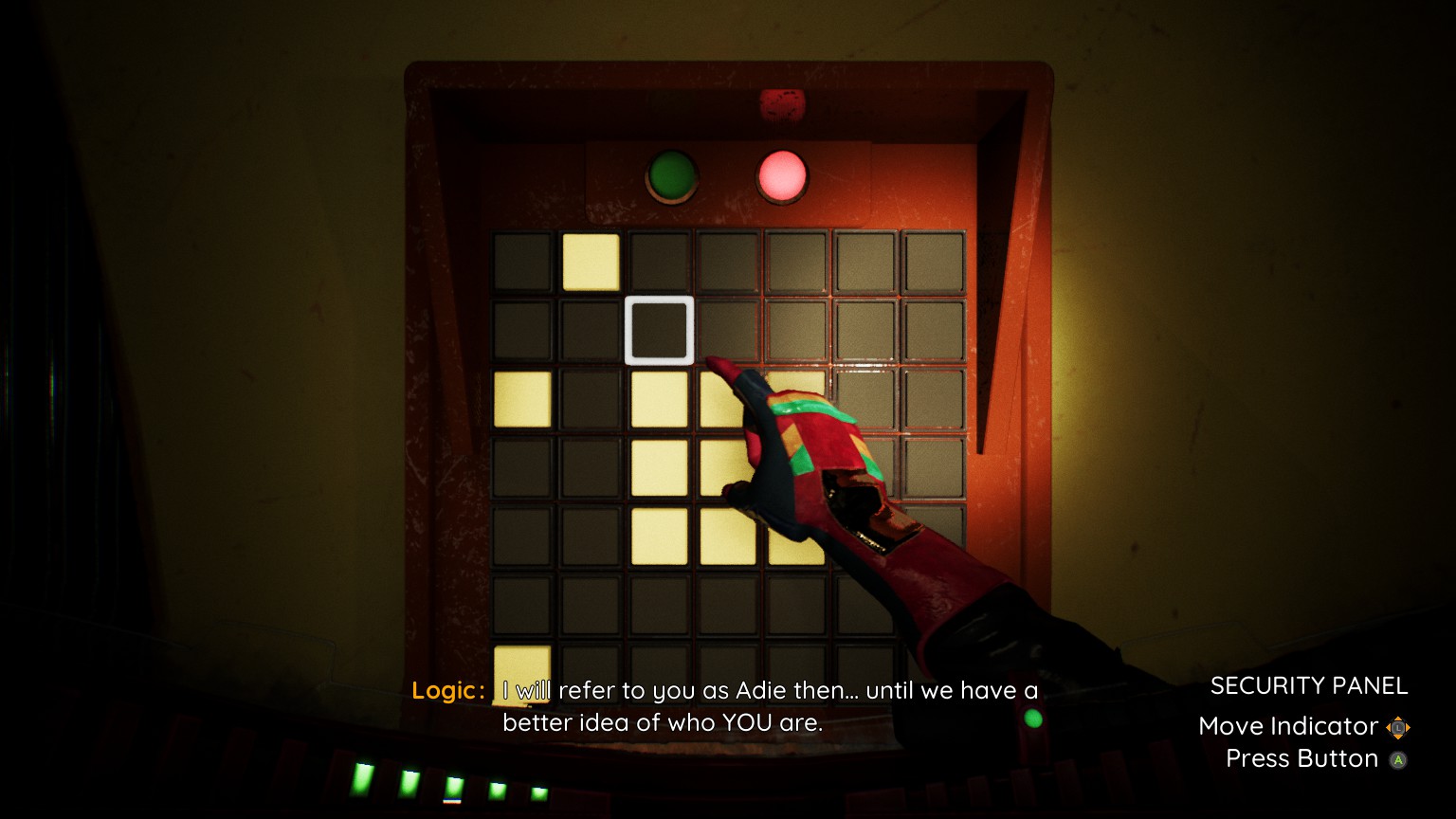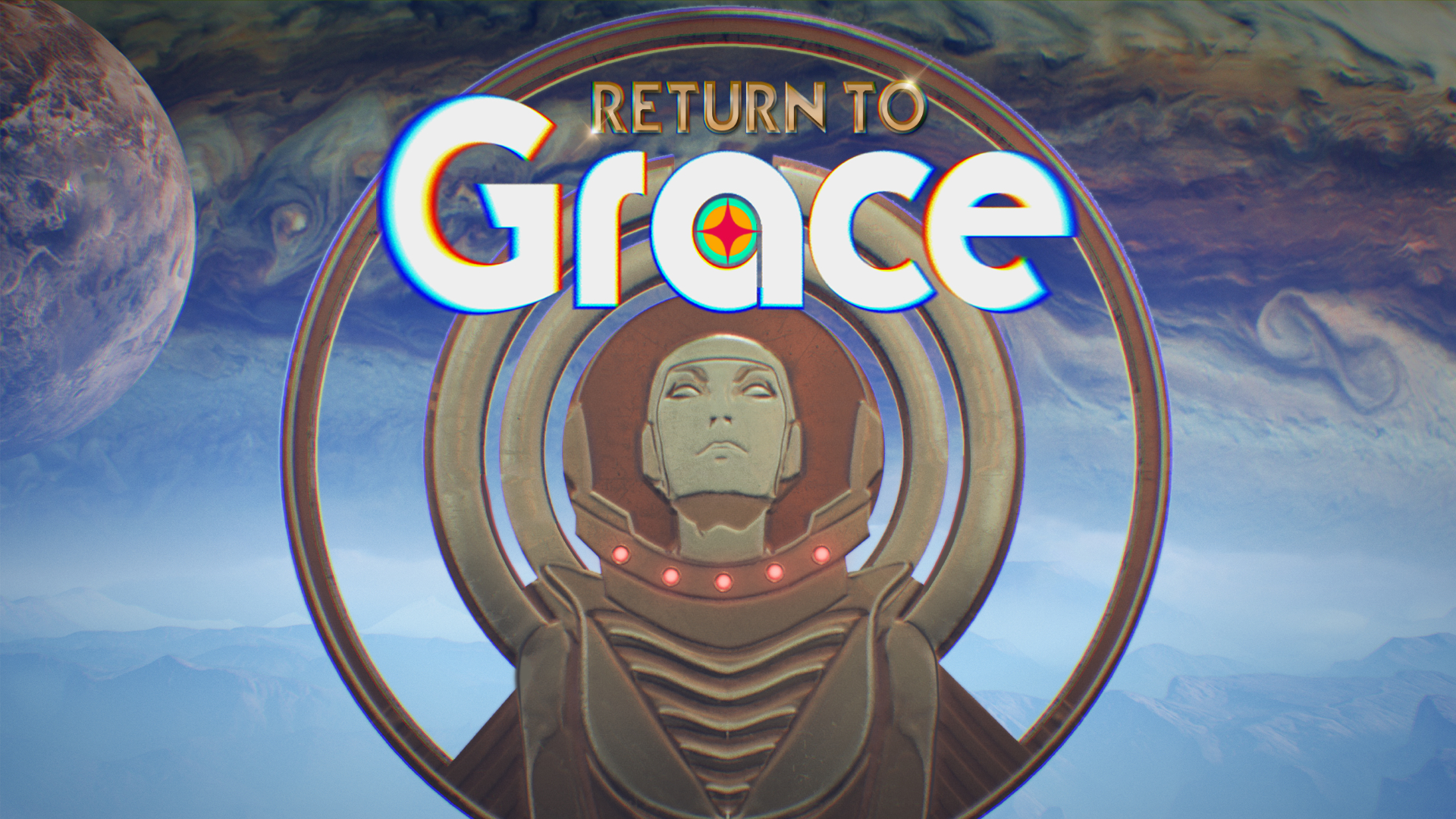As I gazed around the retro-futuristic inspired environments of Return To Grace, I couldn’t help but reminisce of my time spent with games like Firewatch, Journey and Everybody’s Gone To The Rapture.
Another first-person exploration title with no combat nor any significant complex gameplay mechanics, Return To Grace is all about atmosphere, story and experience. It fits snugly into the phrase of “walking simulator” given it’s focus and design, but like those mentioned gems, it’s a contemplative and musing way to spend 2-3 hours of an afternoon.
Let’s set out into the depths of space and explore if it’s as graceful as those that came before it.
Adieu To Ito
Set almost 2000 years into the future in 3820 AD, Adamari (Adie) Ito embarks on a lengthy space-trip to a mystery planet. Adie isn’t just venturing into the furthest reaches of space due to her archeologist background however, she’s investigating humanity’s greatest lost creation: a God-like A.I system named Grace.
Continuing Adie’s journey through the Spire, you’ll get to know more about her own motivations for seeking out Grace. Adie’s voice actress does a fantastic job in realising her personality and adding the layers of complexity to her story in pivotal moments. She can be fun, serious and quizzical in equal measure, making her an interesting protagonist to follow.
Searching for Grace will also have you learning more about the mythical-like structure of the Spire itself. Based on 60s designs and being a relic of 900 years prior, the environment has a lot of tale to tell. From the clear religious cues to the discerning environmental spaces you’ll explore, you’ll piece together what happened, and why Grace went dark all those years ago.
While I wouldn’t place Return To Grace alongside as powerful stories as say: SOMA, What Remains of Edith Finch or Firewatch, it has a lot to appreciate. It’s a condensed tale that, while not especially mind-bending, does a lot with its themes in a short run time. I would have liked to see and experience more of this almost whimsical world, but I’ll happily settle for what we got.

The Ridiculous Six
In order to move deeper into the Spire, Adie will require the help of a handful of A.I personalities, each with their own unique quirks. The initial three: Logic, Control and Empathy, are the direct processes of Grace that have been fragmented from their merged whole. They speak to you as you might expect – Control menacingly barks orders, Logic coldly critiques your human nature while Empathy is an endearing and understanding friendly voice.
Each A.I is required for some environmental purpose, aiding Adie in firing up broken machinery, unlocking doors and the like. At certain story moments, the three core A.I systems will be combined to create three more unique digital beings. Those being: Pal, Mom and Jack. I won’t explain why they’re called that, as it’s more interesting to discover it for yourself.
Aside from their gameplay purposes, the accompanying A.I’s will speak to you via your wrist tool. They’ll bicker amongst themselves, dole out contextual information and will prompt different decisions of Adie. Throughout Return To Grace, Adie can make some contextual decisions, ranging from whether to rush past optional exploration spaces or making more personal philosophical choices.
Outcomes and endings won’t differ almost at all for the most part, so don’t go in expecting some dramatic game-altering decisions. Instead, it’s a more reflective based system that’ll be subtly observed in the background. While it makes the overall decision-making less significant externally, it’s more focused on your internal experience, which I liked quite a lot.

Square Pegs For Spiral Holes
I’ve always been a fan of the walking-simulator genre, so in terms of atmosphere, voice work and overall story, Return To Grace had me pretty hooked. In terms of actually interacting with this game world in a meaningful or engaging way, things get a little bit more complicated.
Return To Grace is incredibly basic in terms of your involvement moving Adie forward. Door puzzles will require you to make shapes using pads that have light-up squares, yet you’re literally told flat out what the shape is. Precarious beams may need to be crossed, meaning you need to… hold forward with left stick and then left or right to balance.
In fact, my involvement using an Xbox gamepad boiled down to: use the A button for everything. You can toggle a helmet camera with Y and that’s kind of it. You’re told where to go, what to do and how to do it basically at all times. It takes hand-holding gameplay to a whole new digitised meaning.
Now, it’s fair to say that for the genre, this is basically the same for every game within this space. Personally, I don’t mind having a more simplistic and easy-going experience every now and then. It allowed me to soak in the environment, focus on the story and enjoy the relatively well-written dialogue. However, the simplicity and lack of decision consequence did make me yearn for something with a bit more depth at times.

Embrace The Light Of Grace
For the most part, Return To Grace embraces its 60s style competently. The various environments you’ll navigate, from frozen tundra to BioShock-esque interior, will have you momentarily impressed. You don’t spend much time in each place which is a smart move, owing to how each space is relatively empty and devoid of more detailed objects.
The minimalist approach is more likely due to budgetary reasons, but artistically it fits the themes of the game nicely. Animation work can be a little more stilted, particularly for Adie’s interactions with some context-sensitive objects. Overall, it might not have the same attention to detail that the best in genre excel at, but Return To Grace has a glowing style you’ll be hard-pressed not to appreciate.
Towards the end I was really impressed with a couple of the wondrous backgrounds and the way the retro-futuristic styles blend so smoothly. The melancholic, gentle tracks that caress your ears as you play through them certainly helps the relaxing, slightly haunting atmosphere too. One late-game piece even had me stop playing temporarily to just take it in.
It may not be the most high-budget or spectacular, but Return To Grace once again makes good use of the resources it has available to it. The A.I personalities representations and a comically toy-looking flamethrower you use briefly slightly undermine the more serious tone, but I still dig the art style.

Well-earned Favour
My playthrough of Return To Grace clocked in at just over two hours, including those times where I stopped and just appreciated the world itself. While there are choices and branching dialogue trees, there’s not a whole lot of replayability to bring you back into good A.I graces.
Consequently, this is sold as a smaller, compact experience that’s about enjoying the journey and the mystery while they last. Personally, I think that’s to Return To Grace’s credit, as I was absorbed in the moment-to-moment gameplay without becoming tired of the overly simplistic puzzles and desensitised to its lovingly realised environments.
As a brief walking-simulator game, it earns a lot of good will without being completely indulged in grace’s blessing.
A short and sweet experiential exploration game, Return To Grace embraces a 60s art style, interesting story and a relaxed approach to gameplay. Unfortunately, the lack of gameplay depth and predictable narrative beats prevent it ascending into the highest echelons of the genre’s grace. Regardless, embarking on Adie’s adventure is a calming and welcome experience in spite of its limitations.

Return To Grace is available May 30th on PC via Steam (review platform) and Epic Games Store.
Developer: Creative Bytes Studios
Publisher: Creative Bytes Studios
Disclaimer: In order to complete this review, we were provided with a promotional copy of the game. For our full review policy, please go here.
If you enjoyed this article or any more of our content, please consider our Patreon.
Make sure to follow Finger Guns on our social channels –Twitter, Facebook, Twitch, Spotify or Apple Podcasts – to keep up to date on our news, reviews and features.
